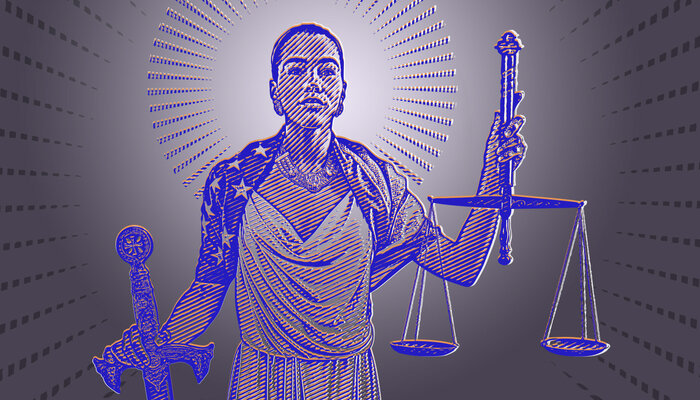This report was updated on July 30, 2024 to reflect the change in composition of the South Carolina Supreme Court with the appointment of Justice Letitia Verdin and the Minnesota Supreme Court with the appointment of Justice Theodora Gaïtas.
In July 2019, the Brennan Center published a comprehensive report on State Supreme Court Diversity, which detailed stark racial, ethnic, and gender disparities on state high courts across the country, drawing on nearly 60 years of data. This year, we updated the analysis with data on the composition of state supreme courts as of July 30, 2024, including updated information on justices’ demographic and professional backgrounds. As we did in our May 2023 update, we also included data on the District of Columbia Court of Appeals, the highest court in Washington, DC. This data was previously updated in May 2023, May 2022, April 2021, and February 2020.
People of color make up over 40 percent of the U.S. population. Fourteen percent of the U.S. population is Black, 19 percent is Latino, 6 percent is Asian1, and 1 percent is Native American. Yet despite an increasingly diverse U.S. population, state supreme courts across the country fail to reflect the diversity of the communities they serve. (Unless otherwise noted, all population data in this analysis comes from the U.S. Census Bureau, 2020 Census Redistricting Data).
These are the key findings since our last analysis:
- In 19 states, no justices identify as a person of color, including in 13 states where people of color make up at least 20 percent of the population.
- 26 states have no Black justices.
- 39 states and DC have no Latino justices.
- 42 states have no Asian justices.
- 46 states and DC have no Native American justices.
- Across all 50 states and Washington, DC, just 20 percent of state supreme court seats are held by people of color.
- Men hold 57 percent of high court seats.
- There are no women judges on the Oklahoma Court of Criminal Appeals. In 5 states, there is only one woman on the supreme court bench.
- There are 25 states in which there are no women of color state supreme court justices and 13 states and Washington, DC in which there is only one woman of color on the supreme court bench.
- Thirty-eight percent of sitting justices are former prosecutors, while only 10 percent are former public defenders.
Endnotes
-
1
In this report, we use the term “Asian” rather than “Asian American” to refer to individuals of Asian descent regardless of citizenship status. As part of our analysis on the representation gap, we compared demographic representation on the state bench with 2020 census data on wider state demographic breakdown, which includes individuals of Asian descent who are non-U.S. citizens. To more accurately account for this wider community and for consistency, we used the term “Asian” throughout the report, including in reference to American judges of Asian descent.






